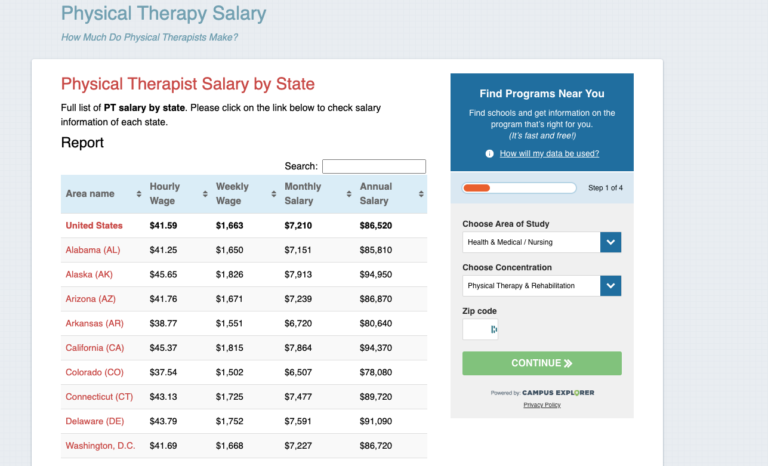MIPS 4: Meeting MIPS Requirements for Physical Therapy Clinics

Meeting MIPS Requirements for Physical Therapy Clinics
Developing an MIPS Strategy
If you haven’t already read the first 3 articles in this series, you can click the following to read them, and if you need the MIPS Quick start guide from Medicare you can get that here.
In today’s healthcare landscape, it is crucial for physical therapy clinic owners to understand and implement the Merit-Based Incentive Payment System (MIPS) to maximize reimbursement and improve patient care. This subchapter aims to guide physical therapy clinic owners in developing an effective MIPS strategy tailored to their clinics’ unique needs.
1. Understanding MIPS for Physical Therapy Clinics:
Before diving into strategy development, it is essential to grasp the fundamentals of MIPS and its relevance to physical therapy clinics. MIPS is a quality payment program that aims to reward healthcare providers for delivering high-quality care. Physical therapy clinics can participate in MIPS by reporting on various performance categories, including Quality, Promoting Interoperability, Improvement Activities, and Cost.
2. Assessing Clinic Performance:
To develop an effective MIPS strategy, physical therapy clinic owners must first assess their clinic’s current performance. This involves evaluating metrics related to patient outcomes, patient satisfaction, and clinic efficiency. Identifying areas of improvement will help focus efforts and resources where they are most needed.
3. Setting Realistic Goals:
Based on the clinic’s performance assessment, owners should set realistic MIPS goals. These goals should align with the clinic’s mission and values while considering the specific requirements and benchmarks established by MIPS. It is crucial to establish both short-term and long-term goals to track progress and motivate staff.

4. Educating Staff:
A successful MIPS strategy relies on the collaboration and commitment of the entire clinic staff. Owners should invest in educating and training their staff on MIPS requirements, data collection methods, and performance improvement strategies. Regular meetings and workshops can help keep everyone informed and engaged in the MIPS process.
5. Selecting Appropriate Quality Measures:
Physical therapy clinics must choose quality measures that align with their practice and patient population. Owners should carefully evaluate available measures and select those that reflect the clinic’s expertise and can drive meaningful improvement. It is crucial to focus on measures that are applicable to the majority of patients treated at the clinic.
6. Leveraging Technology:
Implementing an electronic health record (EHR) system can greatly simplify data collection and reporting for MIPS. Owners should explore EHR options that offer MIPS-specific functionalities and integrate seamlessly with their clinic workflows. Automating data collection and reporting will save time and reduce the risk of errors.
7. Monitoring and Adjusting:
Developing a MIPS strategy is an ongoing process. Clinic owners should regularly monitor their performance, track progress towards goals, and make necessary adjustments. Continuous evaluation and improvement will ensure the strategy remains effective and maximizes reimbursement while enhancing patient care.
In conclusion, developing a MIPS strategy is crucial for physical therapy clinic owners to thrive in the evolving healthcare landscape. By understanding MIPS, assessing clinic performance, setting goals, educating staff, selecting appropriate quality measures, leveraging technology, and monitoring progress, clinic owners can successfully navigate and excel in the MIPS program while delivering high-quality care to their patients.
Choosing Appropriate Quality Measures
In the ever-evolving landscape of healthcare, it has become imperative for Physical Therapy Clinic Owners to stay up-to-date with the latest quality measures. The Merit-based Incentive Payment System (MIPS) has introduced a new era of reimbursement based on the quality of care provided. This subchapter aims to guide Physical Therapy Clinic Owners in choosing appropriate quality measures to ensure success in MIPS.
When selecting quality measures for your physical therapy clinic, it is essential to consider the unique characteristics and areas of expertise within your practice. The first step is assessing your clinic’s patient population and identifying the prevalent conditions or diagnoses. By focusing on conditions commonly treated in your clinic, you can select quality measures that align with your expertise and patient needs.
Furthermore, it is crucial to choose quality measures that are meaningful and relevant to your practice. Quality measures should reflect the outcomes that matter most to patients and measure the effectiveness of the care provided. For instance, if your clinic specializes in post-operative rehabilitation, selecting measures related to pain management or functional improvement post-surgery would be more relevant and meaningful to your patients.
Another aspect to consider when choosing quality measures is their alignment with evidence-based guidelines. Measures that are evidence-based have been proven to improve patient outcomes and can validate the quality of care provided by your clinic. Aligning your clinic’s practices with evidence-based guidelines not only ensures better patient outcomes but also increases your chances of receiving positive reimbursement adjustments.
Additionally, it is vital to assess the feasibility of collecting and reporting data for the chosen quality measures. Evaluate the availability of electronic health records (EHR) systems or other data collection tools that can facilitate data collection and reporting. Choosing measures that can be easily tracked and reported will save time and resources for your clinic.
Lastly, ongoing monitoring and evaluation of selected quality measures are essential for continuous improvement. Regularly reviewing and analyzing your clinic’s performance on these measures will help identify areas for improvement and ensure that the care provided aligns with the desired outcomes.
In conclusion, selecting appropriate quality measures is crucial for Physical Therapy Clinic Owners aiming to succeed in MIPS. By considering the patient population, relevance, evidence-based guidelines, feasibility, and ongoing monitoring, clinic owners can make informed decisions when choosing quality measures. Adapting to the evolving healthcare landscape will not only lead to better patient outcomes but also position your clinic for success in MIPS and beyond.
Incorporating Promoting Interoperability in Practice
Promoting Interoperability (PI) is a crucial aspect of the Merit-based Incentive Payment System (MIPS) for Physical Therapy Clinics. It focuses on the use of certified electronic health record (EHR) technology to improve the quality of patient care, enhance clinical efficiency, and foster better communication among healthcare providers. As a Physical Therapy Clinic Owner, understanding and incorporating PI into your practice can significantly impact your performance and reimbursement under MIPS.
One of the key objectives of PI is to promote the secure exchange of health information between different healthcare systems. This can be achieved by ensuring that your EHR system is certified and capable of securely sharing patient data with other providers through standardized protocols. By leveraging interoperability, you can seamlessly exchange patient information, such as test results, allergies, and medications, with other healthcare professionals involved in the patient’s care continuum. This collaboration ensures that all providers have access to the most up-to-date and accurate information, enabling them to make well-informed decisions about the patient’s treatment plan.
To successfully incorporate PI into your practice, it is crucial to assess your current EHR system’s capabilities and identify any gaps that need to be addressed. Ensure that your EHR vendor is certified and actively supports interoperability standards, such as HL7 and FHIR. Collaborate with your vendor to configure your EHR system to enable secure patient data exchange with other healthcare providers.
Furthermore, actively engage in health information exchange initiatives within your community. Join regional health information organizations (HIOs) or health information exchanges (HIEs) that facilitate interoperability between different healthcare providers. Participating in these initiatives allows you to connect with other providers and share patient information securely. This collaboration not only improves patient care but also strengthens your position in MIPS reporting.
Incorporating PI also involves educating your staff about the importance of interoperability and how to effectively utilize the EHR system to exchange health information. Ensure that your team members are trained on the proper use of the EHR system and understand the implications of interoperability for patient care and MIPS reporting.
By incorporating Promoting Interoperability into your practice, you can enhance the quality of patient care, improve clinical efficiency, and qualify for higher reimbursement under MIPS. Embracing interoperability enables seamless information exchange, collaboration, and better-informed decision-making among healthcare providers. Take the necessary steps to assess your EHR system, engage in health information exchange initiatives, and educate your staff to maximize the benefits of incorporating Promoting Interoperability in your Physical Therapy Clinic.
Implementing Improvement Activities
In the ever-changing landscape of healthcare, it is crucial for Physical Therapy Clinic Owners to stay up to date with the latest regulatory requirements and payment models. One such model that has gained significant attention is the Merit-Based Incentive Payment System (MIPS). As a Physical Therapy Clinic Owner, understanding and implementing MIPS can greatly benefit your practice by improving patient outcomes and financial incentives.
Improvement activities play a pivotal role in MIPS for Physical Therapy Clinics. These activities aim to enhance patient engagement, care coordination, and population health management, ensuring the delivery of high-quality healthcare services. Implementing improvement activities not only helps your clinic score well on MIPS but also results in better patient outcomes and increased patient satisfaction.
To effectively implement improvement activities in your clinic, it is essential to start by assessing your current performance and identifying areas of improvement. This can be done by analyzing patient data, conducting surveys, and seeking feedback from your staff. Once you have identified the areas that require improvement, you can choose suitable improvement activities from the MIPS Improvement Activities Inventory.
Selecting the right improvement activities is crucial for maximizing your MIPS score. It is important to align these activities with your clinic’s goals, patient population, and available resources. For instance, if your clinic specializes in geriatric care, you may choose improvement activities related to fall prevention or medication management for older adults.
Once you have selected the improvement activities, it is vital to develop an action plan and assign responsibilities to ensure successful implementation. This may involve training your staff, updating workflows, and integrating new technologies or tools into your practice. Regular monitoring and feedback loops are essential to track progress and make necessary adjustments to achieve desired outcomes.
Collaboration and communication are key when implementing improvement activities. Engaging your staff, patients, and other healthcare providers in the process fosters a culture of continuous improvement and ensures a coordinated approach to patient care. Sharing success stories and best practices within the physical therapy community can also inspire and motivate others to implement improvement activities in their clinics.
In conclusion, implementing improvement activities is a vital step towards mastering MIPS for Physical Therapy Clinics. By assessing your clinic’s performance, selecting appropriate activities, and ensuring effective implementation, you can not only improve your MIPS score but also enhance patient outcomes and satisfaction. Embracing a culture of continuous improvement will position your clinic as a leader in delivering high-quality healthcare services and maximizing financial incentives.
Managing Costs in MIPS
In the ever-evolving landscape of healthcare, it is crucial for physical therapy clinic owners to stay on top of the latest reimbursement models and regulations. One such model that has gained prominence in recent years is the Merit-based Incentive Payment System (MIPS). As a physical therapy clinic owner, understanding and effectively managing costs in MIPS is essential for maximizing your clinic’s financial success.
MIPS for Physical Therapy Clinics introduces a new way of reimbursement that focuses on quality and performance metrics. However, successfully participating in MIPS requires careful management of costs, as failing to do so can result in financial penalties and reduced reimbursements.
First and foremost, it is important to have a comprehensive understanding of the cost category within MIPS. This category accounts for 15% of the total MIPS score and includes measures related to resource use, such as the total per capita cost and Medicare spending per beneficiary. By analyzing your clinic’s resource utilization patterns, you can identify areas where costs can be reduced without compromising the quality of care. This could involve optimizing staff scheduling, streamlining administrative processes, or implementing evidence-based practices that reduce unnecessary tests or treatments.
Another crucial aspect of managing costs in MIPS is ensuring accurate coding and documentation. Proper documentation not only ensures compliance but also helps in accurately capturing the services provided and justifying the associated costs. It is imperative to educate your staff on the importance of thorough and accurate documentation, as this can minimize the risk of audits and potential financial penalties.
Furthermore, investing in technology and data analytics can greatly aid in managing costs in MIPS. Implementing an electronic health record (EHR) system that integrates with MIPS reporting can streamline data collection and reporting processes. This not only saves time but also allows for real-time monitoring of cost-related measures, enabling proactive cost management.
Collaboration with other healthcare providers is another effective strategy for managing costs in MIPS. By partnering with primary care physicians, specialists, and other healthcare professionals, you can coordinate care and reduce unnecessary duplicate services or referrals. This collaborative approach not only improves patient outcomes but also helps in optimizing resource utilization and controlling costs.
In conclusion, managing costs in MIPS is a critical component of financial success for physical therapy clinic owners. By understanding the cost category, ensuring accurate coding and documentation, leveraging technology, and fostering collaboration, you can effectively manage costs while providing high-quality care. Embracing these strategies will not only help maximize reimbursements but also position your clinic as a leader in value-based care delivery.





